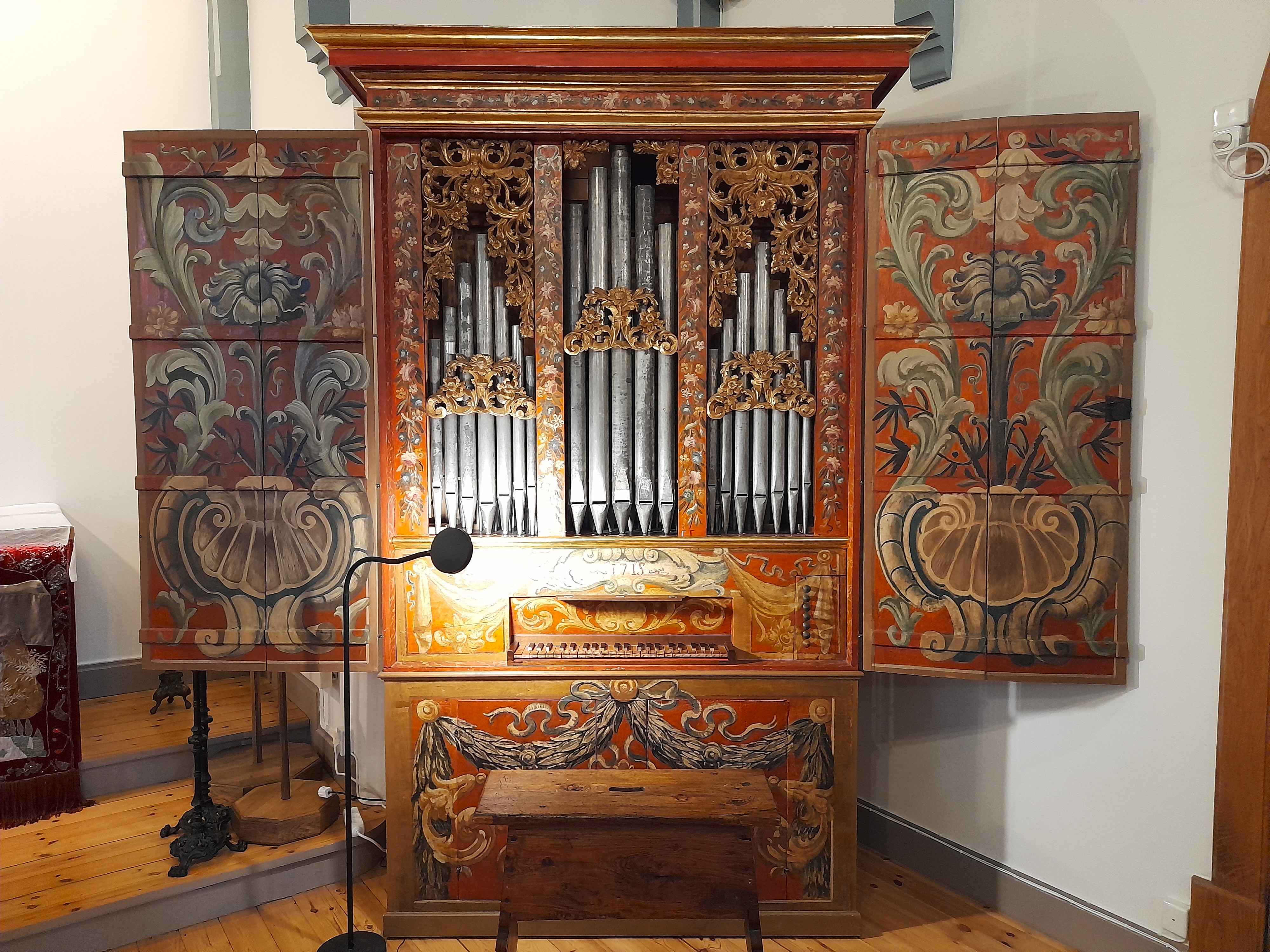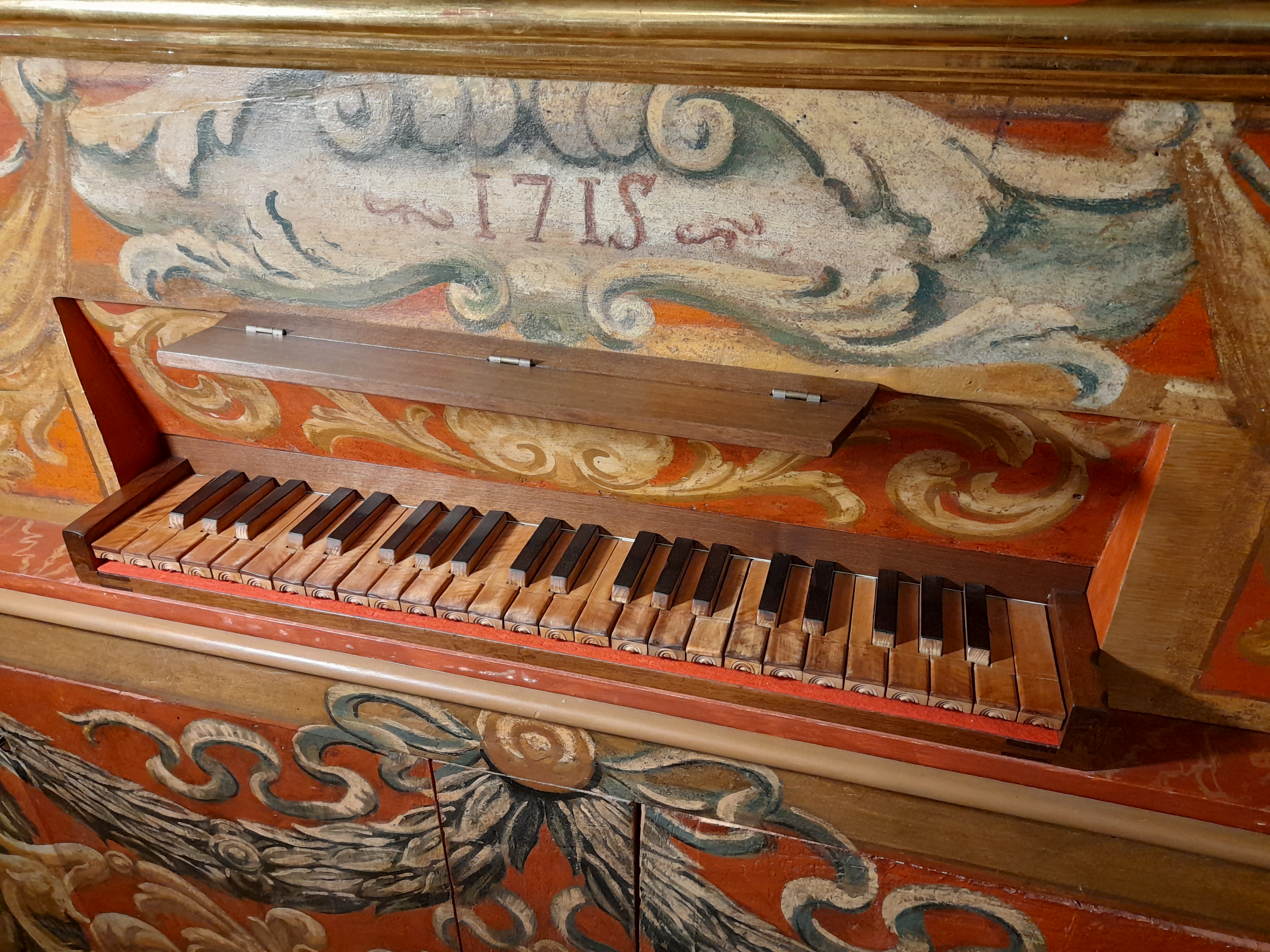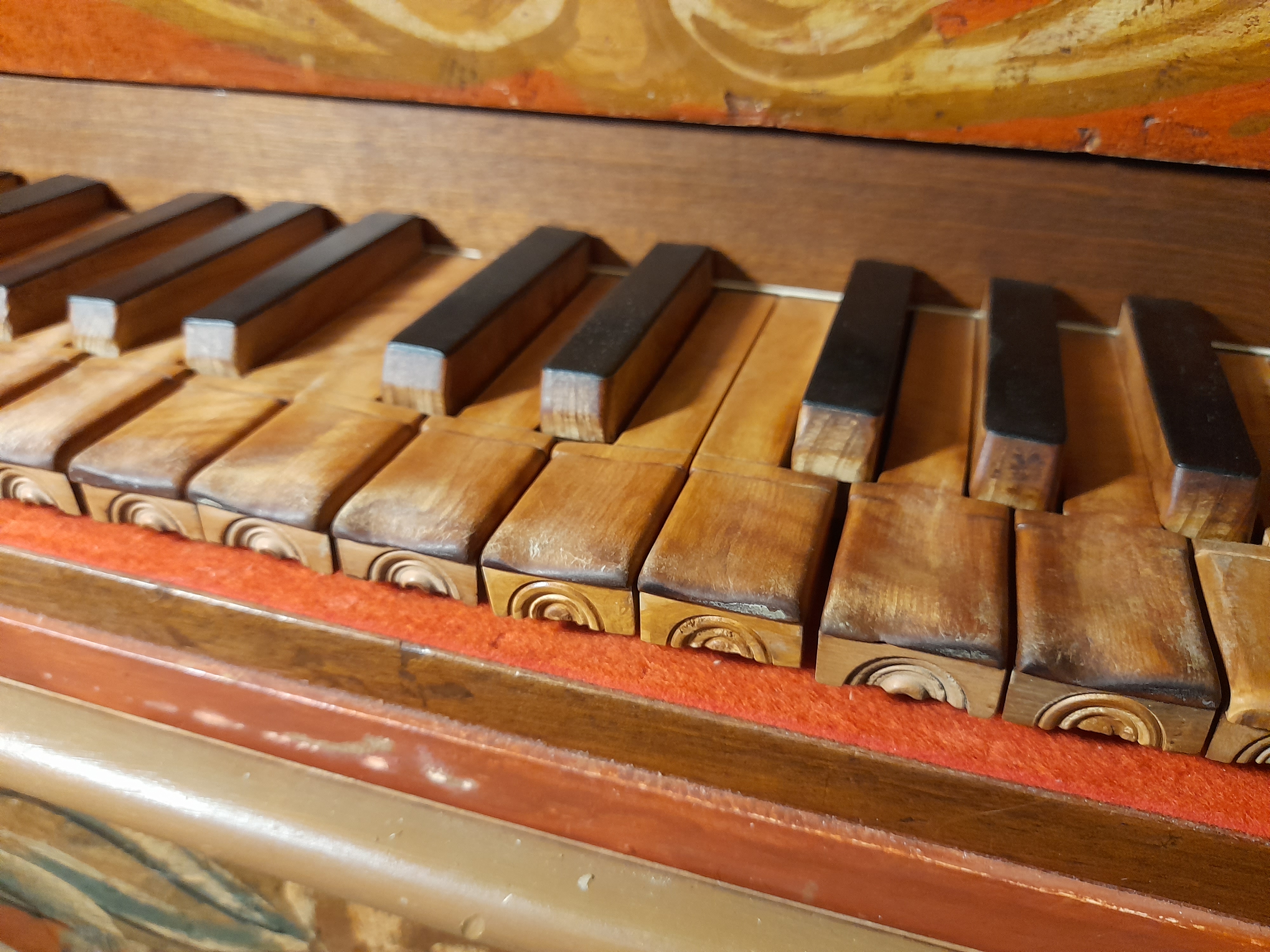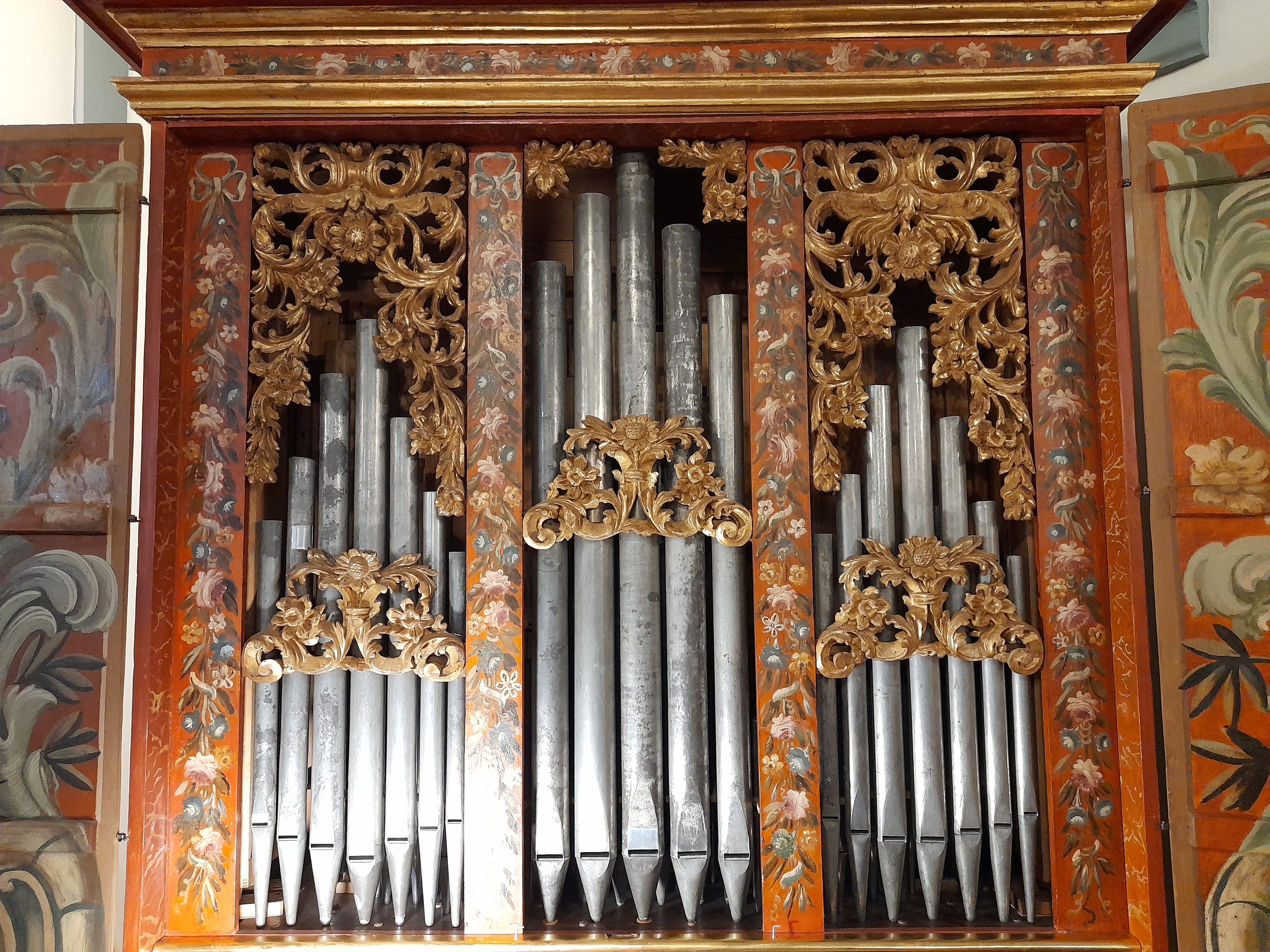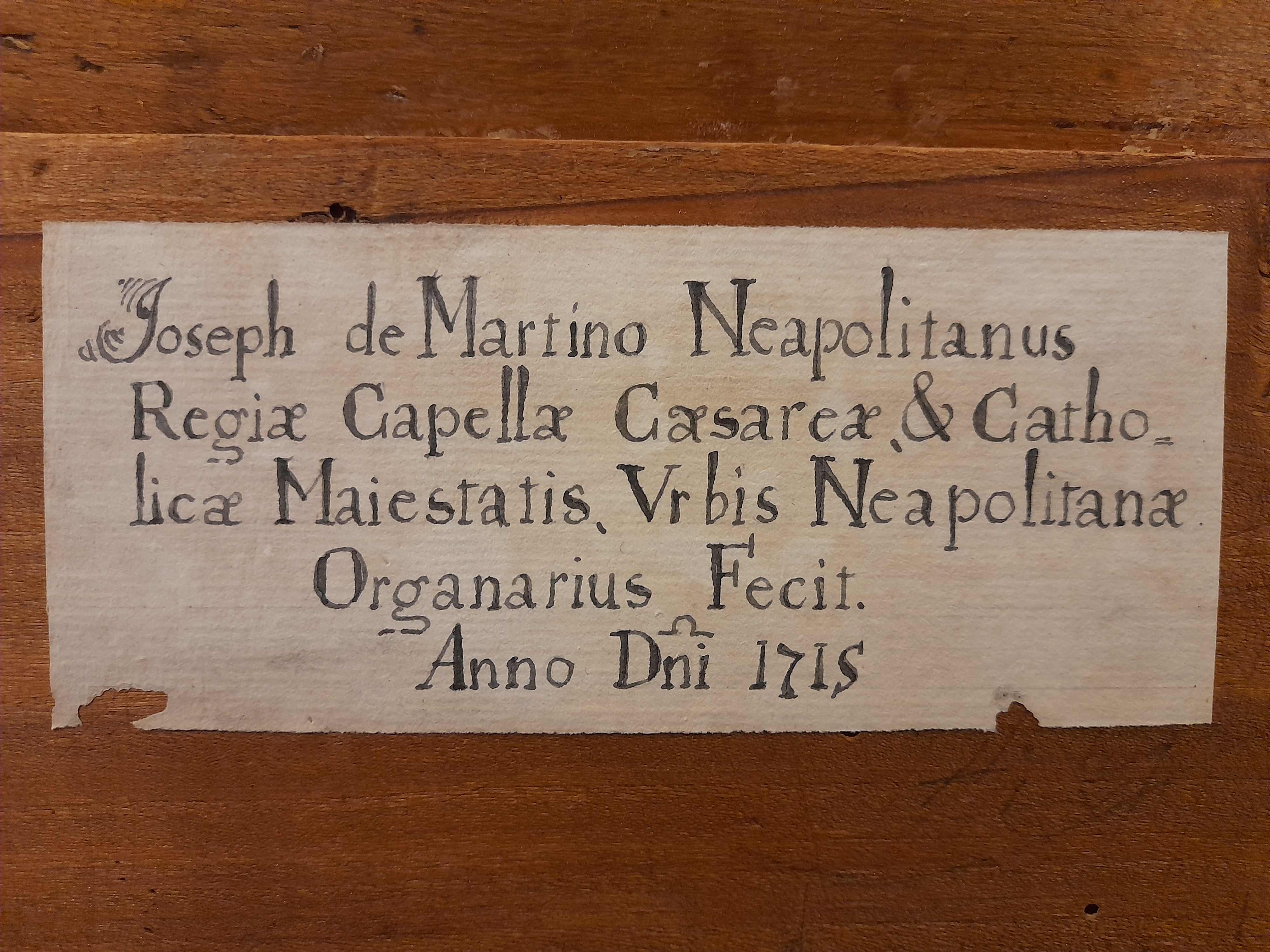Karlskoga, Skogskyrkogården Kapell
| Builder | G. de Martino |
|---|---|
| Year | ca. 1715 |
| Period/Style | Baroque |
| Stops | 7 |
| Keyboards | 1 |
| Keyaction | tracker/mechanical |
| Tuning | 1/4 Comma Meantone at 435 Hz |
The story of the organ at Skogskyrkogårdens Chapel in Karlskoga is a fascinating tale of resurrection and transcontinental journey. Originating from an antique shop in Rome, the organ case, in a state of severe disrepair, was initially purchased as a decorative piece. However, an enthusiast from Bologna initiated a comprehensive restoration project in 2006, aiming to revive the organ to its 1715 glory. This involved constructing many new parts including the wind-chest, bellow, keyboard mechanics, and most of the pipes, while incorporating the few remaining original façade pipes. The esteemed Italian organ building company Inzoli-Bonizzi meticulously reconstructed the instrument, retaining the historical essence within a modern structure.
In September 2020, the organ was transported to Karlskoga in central Sweden and installed in the Forest Chapel by the Samuele Maffucci organ building company. Although only a fraction of the original materials remain, making it not a completely authentic historical organ, it stands as a unique instrument in Sweden due to its specific style and tonal character. Built originally by the renowned Neapolitan organ builder Giuseppe de Martino in 1715, this organ is now a valuable resource for teaching and research. It complements the organ landscape of Karlskoga Parish, facilitating church services, concerts, and masterclasses. The instrument, with its single manual and 45 keys in ¼-comma Meantone temperament, enriches the cultural and musical heritage of the region.
In September 2020, the organ was transported to Karlskoga in central Sweden and installed in the Forest Chapel by the Samuele Maffucci organ building company. Although only a fraction of the original materials remain, making it not a completely authentic historical organ, it stands as a unique instrument in Sweden due to its specific style and tonal character. Built originally by the renowned Neapolitan organ builder Giuseppe de Martino in 1715, this organ is now a valuable resource for teaching and research. It complements the organ landscape of Karlskoga Parish, facilitating church services, concerts, and masterclasses. The instrument, with its single manual and 45 keys in ¼-comma Meantone temperament, enriches the cultural and musical heritage of the region.
| Manual |
|---|
| Principale 8 |
| Ottava 4 |
| XV |
| XIX |
| XXII |
| XXVI |
| Tirapieno |
https://riccardo-gnudi.blogspot.com/2024/05/italianorgankga.html
 Pipe Organ Map
Pipe Organ Map